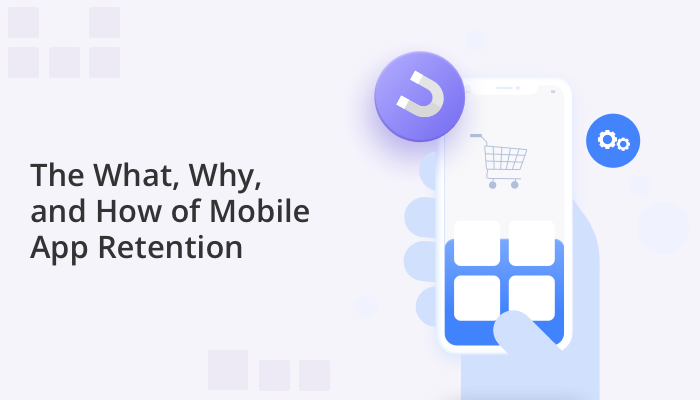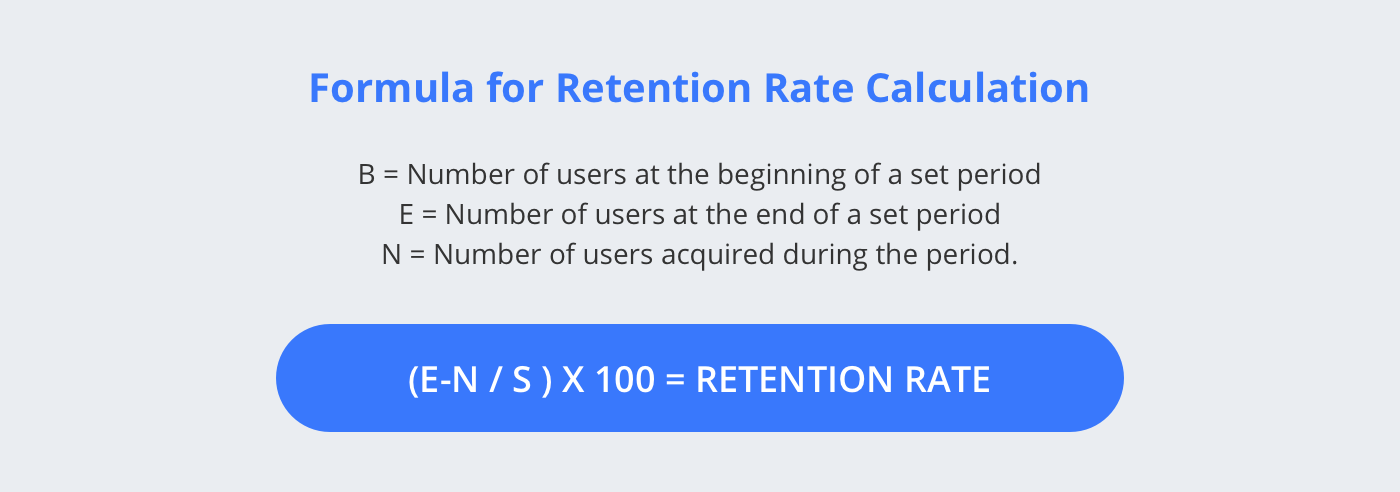
If you design, build, or market mobile apps, then paying attention to mobile app retention rates is essential. App retention reveals the extent to which users still engage with your app after they’ve installed it onto their phone. While getting users to choose and install your app in the first place is a significant achievement, the value of user acquisition is diminished if your retention rate is low. Unfortunately, this is often the case. App retention rates are notoriously low. Recent research highlights that the average retention rate across app categories declines from 25.3% on the day of installation to a meager 5.7% by day 30.
It’s no wonder then that in today’s fiercely competitive mobile marketing space, app retention has become the most critical factor in measuring the success of any app. But what exactly is app retention rate, how do we calculate it, and in what ways can we improve it in the long run? Read on to discover how to develop a solid app retention strategy.
Table of Contents
What is Mobile App Retention?
Mobile app retention rate refers to the net percentage of app users who continue to use an app over a period of time (weekly, monthly, or quarterly). It is one of the key metrics for app marketing that reflects how successfully an app engages new users.
While a high app retention rate reflects customer satisfaction with the mobile app and how they value the product, a low retention rate is a sign that the app offerings don’t meet the specific needs of the target user.
High retention rates are a key metric to demonstrating business success. It means that you are doing something right with the design and functionality of your app. User retention is crucial for ongoing app monetization.
Why App Retention Matters
App retention is important. Mobile marketers understand that it costs much more to onboard a new client to their apps than compared to retaining an existing one. Keeping your app users engaged and active should be a priority as improved retention rates increase your company’s revenue. The longer a user engages with your app, the greater the opportunity to generate additional revenue with upgrades and in-app purchases. By some calculations improving your retention rate by just 10% can increase the value of your business by more than 30%.
Given its importance, tracking retention rates is immensely important for any business. Data on app retention provides a transparent picture of how well your business is doing, and how well your product is being received. For example, you might be operating under a false sense of confidence if you focus solely on your user acquisition rate. It is possible to have many people downloading the app, but if a maximum of them delete it within a few days or weeks, the total number of acquired users is still very small. Tracking retention allows you to make more accurate forecasts about revenue.
Tracking retention also provides important information about your app. Poor retention indicates that there may be something wrong that needs improving. For example, a large percentage of users deleting your app within the first few days of a download may suggest issues with onboarding. You might want to provide clearer instructions for your users to get them started or improve the UI to make it easier to navigate. Alternatively, if retention rates tend to drop off later down the line, you might want to think of strategies to re-engage users, such as alerts and notifications before they reach that point.
How to Measure App Retention
There are variations to the way retention rates are calculated. It generally involves tracking the behavior of a particular cohort of users over a given period. The metric is calculated as a percentage and is usually measured at specific intervals: after the 1st, 7th, and 30th day of an app download.
To calculate an app retention rate, you need to compare the total number of app users at the beginning and end of any given period, while also taking into account new users acquired during that period.

So, for example, if you had 1000 app users at the beginning of the month, acquired a further 30 during the month, but had only 220 users by the end of the month, your retention rate would be:
(220-30/1000) X 100 = 19%
Retention Benchmarks
Of course if you have a low user retention rate for your app, this may not be entirely the fault of your app. The mobile app market is highly competitive. In the single month of October 2022, over 130 thousand mobile apps were released through the Google Play and Apple App stores combined. Users have thousands of apps to choose from making it very easy to swap out one for another if not entirely satisfied.
This is where it becomes helpful to compare your app against industry benchmarks. Statistics collated by Appyflyer over a 3 year period, show that it is not unusual for app retention to decline by as much as 95% after a 30 day period. Some categories of Apps perform much better than others. News-related apps rank highest with a retention rate of 11.3% after 30 days, by contrast e-Commerce apps had a retention rate of 5%, Finance 4.6%, and Health and Fitness apps at 3.7%.
Metrics for Measuring User Engagement
To avoid poor retention, you’ll want to be tracking user engagement throughout their journey with your app. This means it’s important that you remain cognizant of other vital metrics.
Churn Rate
Think of churn as the polar opposite of retention. While you are striving for as high a percentage as possible for retention, you’ll want to keep your churn rate low. Churn rate is the percentage of lost users within a certain period. Keeping the churn rate low helps retain users for a much longer period, thus bringing in more revenue to the product and business overall.
Daily and Monthly Active Users (DAU and MAU)
DAU refers to the number of unique users that engage with the app in a day, whereas MAU measures the number of unique visitors every month.
These important metrics indicate whether the app brings in the expected and desired value to the users and when or how often they return to it. This is typically measured by interactions with the app or sign-ins.
Average Session Time and Frequency
The average time a user spends in the app, right from when it is launched to when they exit, is referred to as the average session time. The idea is that the longer the time spent, the more the amount of satisfaction. Equally it is helpful to track how often they engage with your app. Short intervals between sessions is indicative of greater investment in your app.
Crashed Sessions
Another metric worth tracking is the number of crashed sessions over a set period. Even one app crash at a crucial time can make a user quickly leave or uninstall an app instantly. It is, therefore, extremely important to pinpoint the exact situation that leads to a crash and fix it immediately.
How to Improve App Retention Rates
There are several mobile app retention strategies you can employ to avoid high churn rates and improve retention.
In-App Messages & Push Notifications
In-app messages are a great way to communicate with users who are already within the app, while push notifications are a powerful tool to reach users when their app is offline.
Both, if used appropriately, can be used to boost engagement. For example, they can be used to announce feature updates or promotional offers, or for acknowledging a particular milestone a user has achieved whilst using your app such as a game score or a fitness goal. In fact personalizing messages can make all the difference and are more likely to catch the user’s interest. It’s important however to use in-app messages or push notifications strategically. Too many sent could have the adverse effect of prompting the user to delete your app.
Learn more about: How push notifications can improve your business.
Improved Onboarding Process
App onboarding offers an important opportunity to make a positive first impression with new users. A seamless onboarding experience builds trust in your app, making it much more likely the user will return. Complex and difficult-to-understand apps increase the likelihood of apps being uninstalled. Creating an effortless onboarding experience is all about understanding what users want to gain by downloading the app and giving them that value as quickly as possible.
In-App Chat Support
Offering in-app chat support is a powerful way to engage your users. Knowing that they can easily get assistance from within the app, makes it much more likely that they will stick around. The chat support can come via a BOT that answers FAQs or with an actual live agent. From customers on a banking app working querying a statement, buyers on an ecommerce app with a specific product question, or individuals on a fitness app, needing clarification about a workout schedule – there are plenty of use cases where the inclusion of in-app chat support would be a major determinant of whether an app user returns.
Learn more about: Using Real-Time Chat to Optimize Marketplace Engagement & Boost Conversions
Final Takeaway
To ensure the commercial success of your app, start worrying less about user acquisition and more about app retention. If an app cannot retain its existing user base, it will soon lose out on potential revenue.
The key to a successful app retention rate lies in its ability to positively engage its audience and make them come back for more.
To that end, if you are looking to build an app that offers in-app chat, video calling, push notifications, multimedia sharing and more, QuickBlox chat API & Messaging SDK is the perfect solution. Contact us to learn more!




















